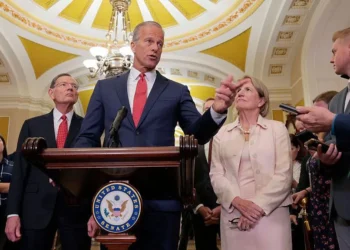An industry navigating a maze of regulatory changes is under pressure as a 25% import tax on engines, gearboxes, and other essential auto parts goes into effect in the US. Days before, in response to business concerns, Donald Trump loosened the tariff but left it in place.
According to the US president, the goal of the new tariff and the 25% auto import tax that went into force last month is to encourage automakers to increase their US production.
However, experts warned that any quick growth in the US would probably result in increased expenses for the companies and, eventually, higher prices for consumers, as well as the loss of production abroad.
Businesses have been spared suffering for the time being since worries about price increases have led to a spike in sales. This week, Ford and General Motors said their double-digit sales surge in April is ongoing.
However, GM also cautioned that it anticipated additional expenses from the tariffs of up to $5 billion (£3.7 billion) this year, including around $2 billion in fees for vehicles it manufactures in South Korea and ships to the US. Instead of anticipating a price decline, executives indicated they now anticipated a 1% increase.
As a symptom of the unrest, several automakers, including Stellantis, the manufacturer of Jeep, Fiat, and Chrysler, withdrew their financial projections for the upcoming year, noting the fluidity of the situation.
Also Read:
Amazon ‘Plan’ to Display Tariff Pricing Increases is Retaliated Against by the White House
Iran And the US Plan to Meet Next Week after Ending their Nuclear Negotiations in Rome































































